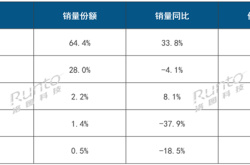DLSS 4 Pushes Frame Rates Beyond Imagination: iGame RTX 5080 Ultra W OC 16GB Review
![]() 01/31 2025
01/31 2025
![]() 501
501
In the modern era, where computational prowess reigns supreme, AI has permeated various industries, particularly the gaming sector. NVIDIA's DLSS, for instance, has been a staple for gamers for nearly six years, delivering unprecedented frame rate improvements and making ray tracing and other special effects accessible even to mid-range graphics card users.
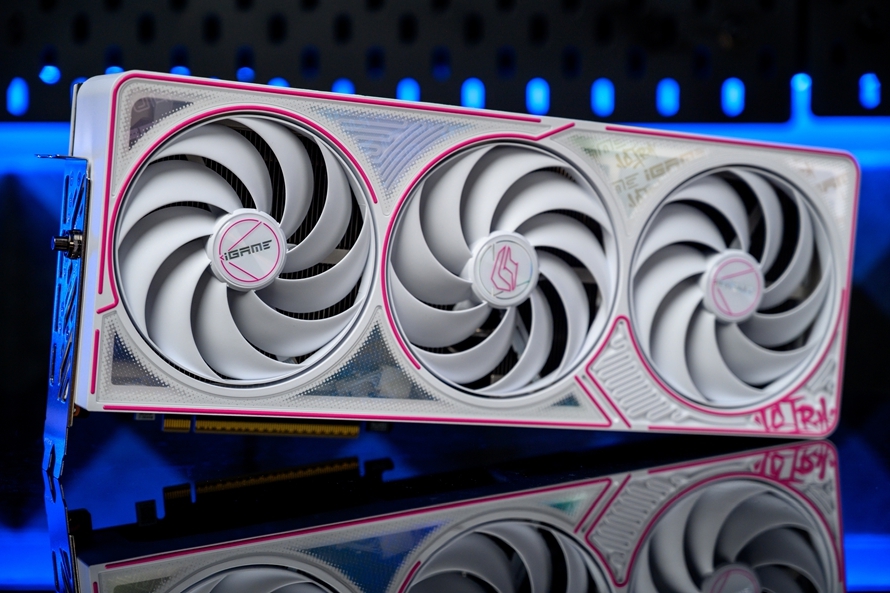
With the GeForce RTX 50 series, the prowess of DLSS 4 has been on full display. While the flagship GeForce RTX 5090 D showcases its capabilities, how does DLSS 4 perform on the GeForce RTX 5080? Let's delve into the details.
Architecture Analysis
Gamers and NVIDIA face a fundamental contradiction: gamers' insatiable demand for higher frame rates and superior graphics quality. However, Moore's Law has hit a bottleneck in GPUs, making it increasingly challenging for graphics card manufacturers to enhance performance by simply stacking transistors. NVIDIA acknowledges that many special effects would remain unfeasible or uncommercialized without AI-driven advancements.

This is where AI steps in, revolutionizing gaming performance by transforming the underlying rendering method. Unlike traditional rasterization computing units, NVIDIA's new Blackwell architecture prioritizes strengthening AI computations, introducing neural network rendering and enhancing SM units. For example, the Blackwell architecture GPU includes FP4 computing units and the fifth-generation Tensor Core, with FP4 precision reaching 4000 TOPS.

Addressing concerns about FP4's precision vis-à-vis traditional FP32 and INT8, NVIDIA notes that the AI landscape is booming, leading to a myriad of algorithms and models. NVIDIA selects and optimizes the AI model best suited for GPUs and gamers, hence the inclusion of the FP4 computing unit in the latest GeForce RTX 50 series graphics cards.

Furthermore, the Blackwell architecture introduces the fourth-generation RT Core with 360 RT TFLOPS. An AI manager integrated into the GPU manages the growing demand for AI computing power, ensuring efficient resource utilization. NVIDIA has also reorganized and optimized the SM units for neural computing, transitioning from the mixed INT32/FP32 and FP32 design in the Ada architecture to an all-INT32/FP32 shader core design with a maximum mixed performance of 125 TFLOPS, aimed at boosting AI computation efficiency.
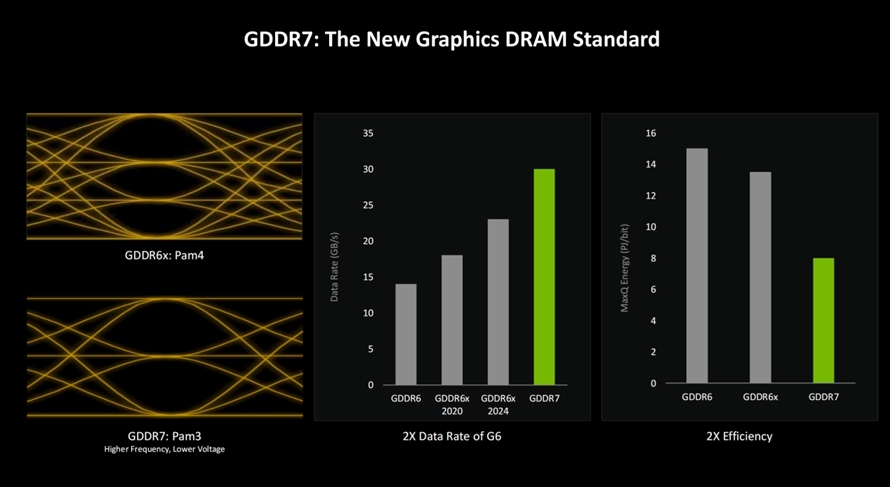
The GeForce RTX 50 series graphics cards also feature GDDR7 memory, employing a novel PAM3 encoding mechanism that offers higher transmission bandwidth and allows memory frequencies to reach 30 Gbps, with potential future increases exceeding 40 Gbps. This high memory bandwidth accelerates AI computations, and GDDR7 memory consumes approximately half the power of GDDR6.
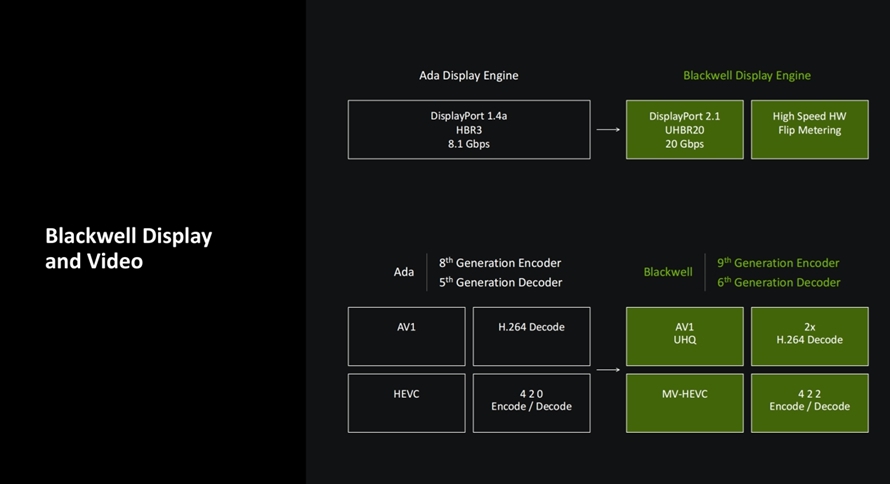
For video users, the Blackwell architecture introduces numerous new media encoding features, including DisplayPort 2.1, support for 4:2:2 H.264 and H.265 codecs, and H.265 support for MV-HEVC encoding, providing video editors with greater creative freedom. The Blackwell architecture is undeniably AI-centric, leveraging its power to transcend Moore's Law constraints and elevate gamers' experiences.
This review features the Colorful GeForce RTX 5080 graphics card, equipped with 10752 stream processors, the fifth-generation Tensor Core, and the fourth-generation RT Core. The GPU boasts a base frequency of 2.235 GHz, a Boost frequency of 2.52 GHz, and 16 GB of GDDR7 memory.
Appearance
Modern consumers not only seek powerful graphics card performance but also appreciate aesthetics, especially creators who often pursue unique styles. The iGame GeForce RTX 5080 Ultra W OC 16GB, tailored for young consumers, exudes a youthful and fashionable design.
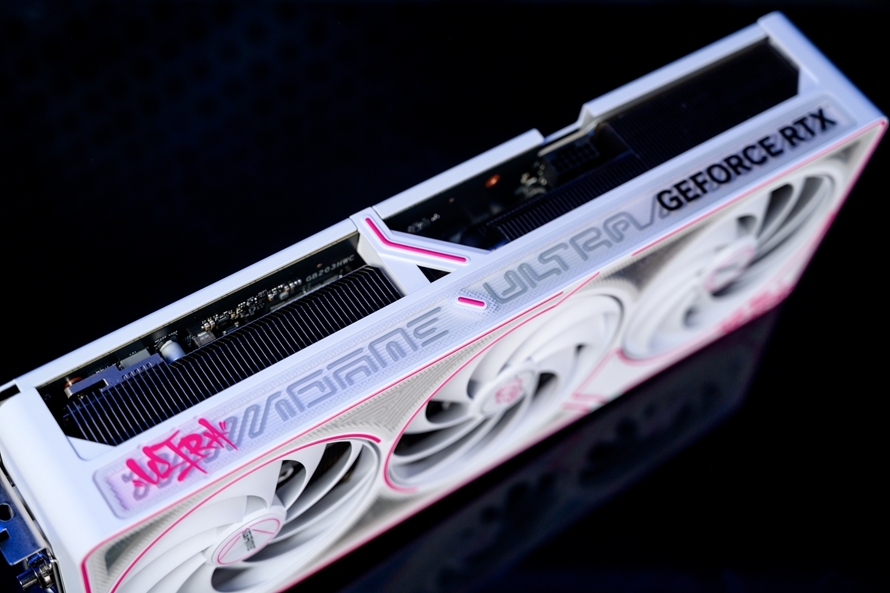
The ULTRA series from iGame emphasizes youth and fashion, differentiating itself with various popular styles. For the GeForce RTX 50 series, iGame introduced a Hip-Hop style to the Ultra series, utilizing HIP-HOP art culture. With a pure white base and peach pink accents, the graphics card embodies the youthful spirit of Hip-Hop. The side of the card showcases the strong visual impact of graffiti art and the aesthetic appeal of font design, making it a unique landscape and a symbol of fashion and trend culture.

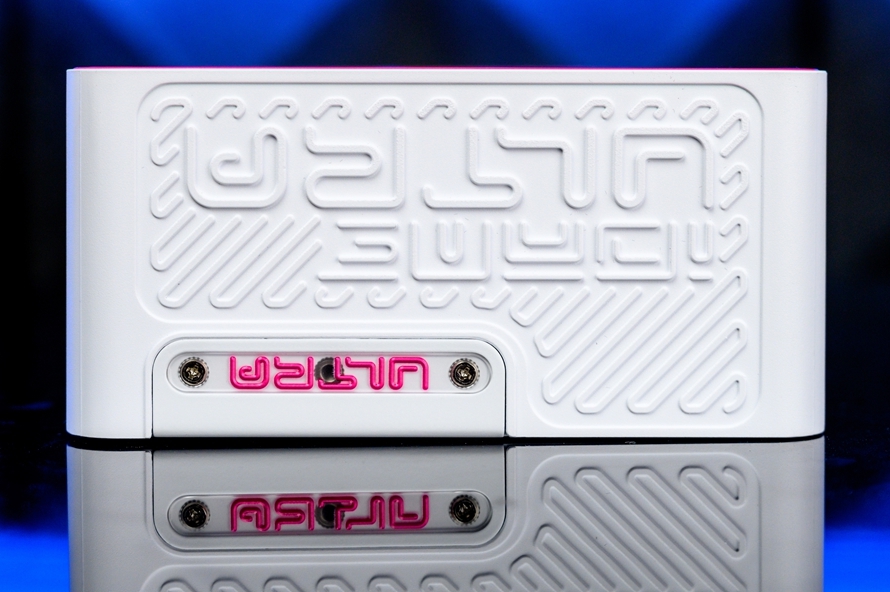
The iGame GeForce RTX 5080 Ultra W OC 16GB features a perforated backplate design to enhance airflow efficiency. Additionally, it incorporates more Hip-Hop elements, infusing the graphics card with a unique personal flair. The tail end of the card also adopts graffiti art design, exuding personality.

A notable feature of this generation of graphics cards is the significant increase in power consumption, necessitating robust cooling solutions. iGame has designed a new cooling architecture, including triple-ring 101mm fan blades connected through reinforced rings for durability. Large heat dissipation fins enhance thermal conductivity, and the heat pipes feature an eight-heat-pipe design with diameters of 4*8+4*6mm, further improving cooling performance. The graphics card utilizes a 10+4+3 phase power supply, ensuring stable operation with outstanding electrical performance.
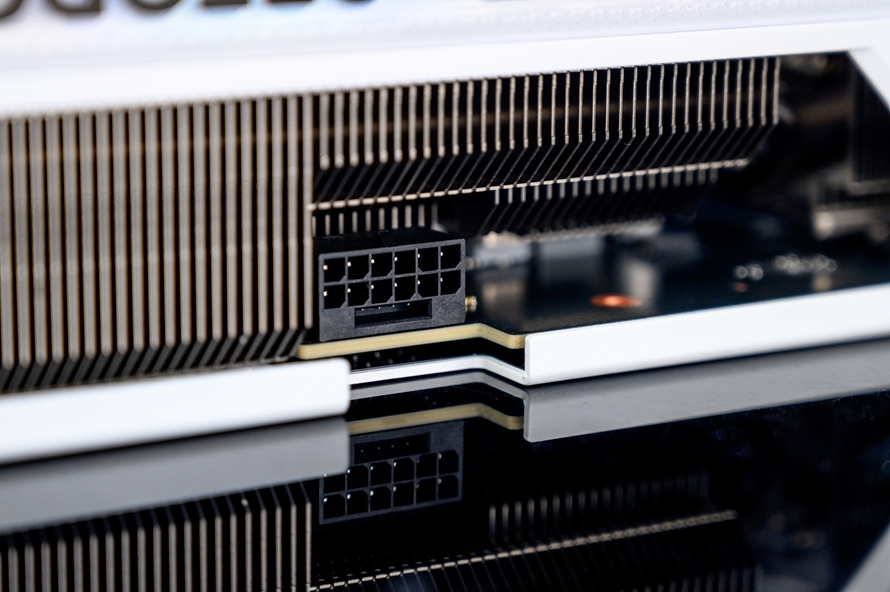
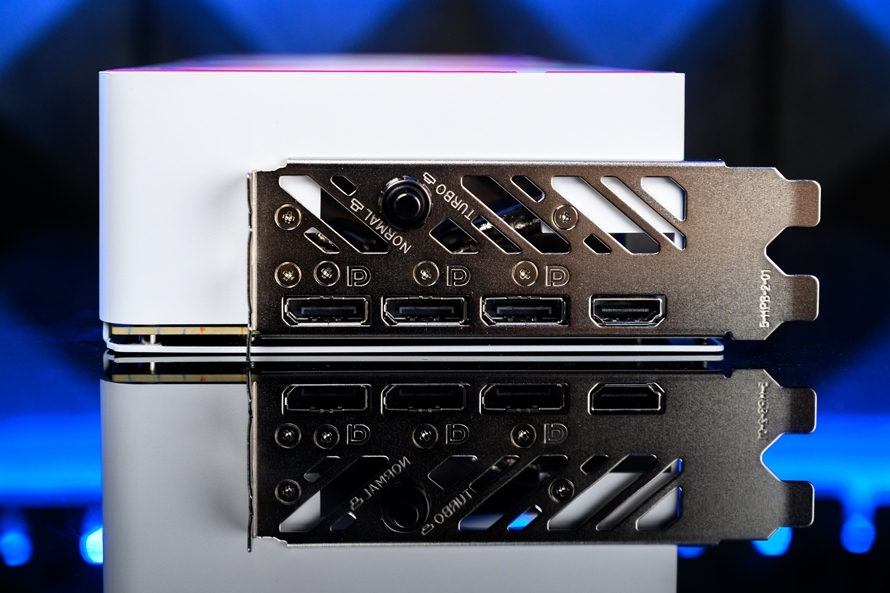
For external connectivity, besides three DP 2.1b and one HDMI 2.1b interfaces, the iGame GeForce RTX 5080 Ultra W OC 16GB also features a 16Pin interface and a one-click overclocking button. In overclocking mode, the core frequency increases from 2295/2617 MHz to 2295/2655 MHz, with the TDP rising by 20W to a maximum of 380W, providing enhanced performance.
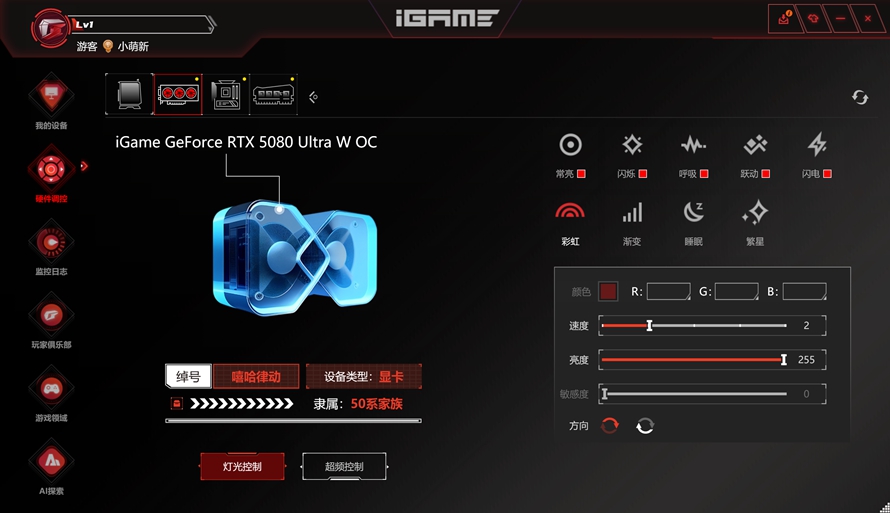
Users can also utilize the latest iGame Center control software to adjust the lighting of the graphics card and synchronize it with their iGame motherboard, offering great convenience.
Platform Setup
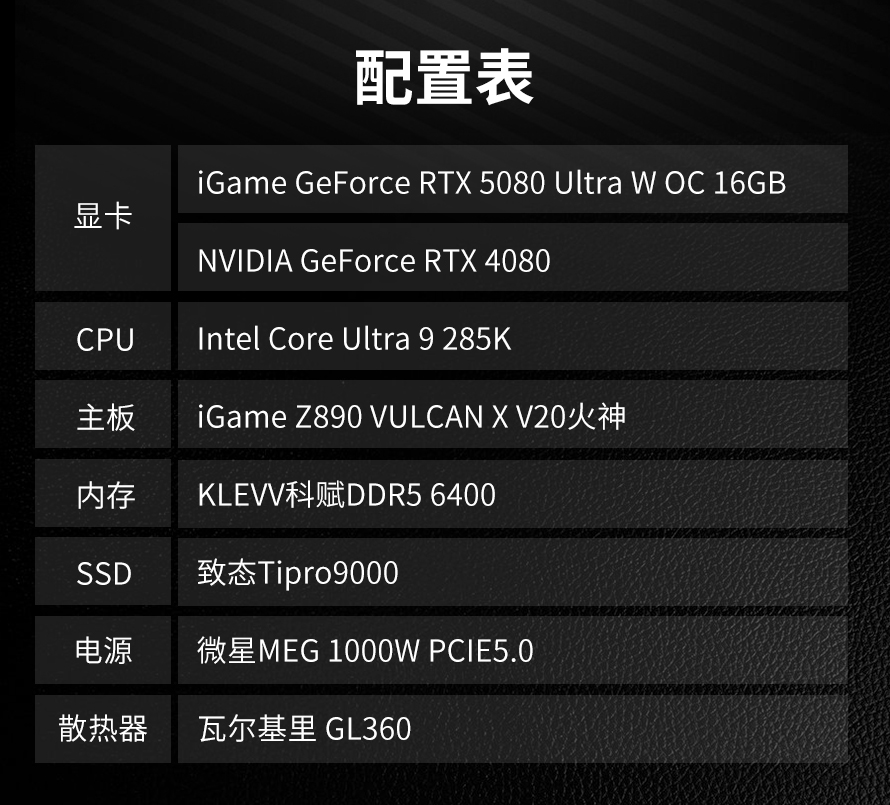
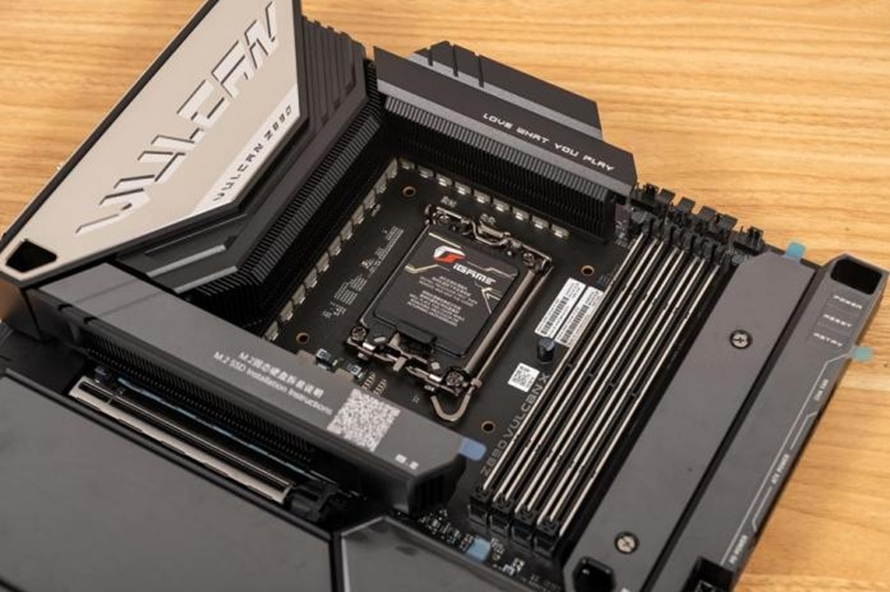
For the testing platform, we chose the Intel Core Ultra 9 285K processor paired with the iGame Z890 VULCAN X V20 Vulcan motherboard. This motherboard features a 20+1+1+1 phase power supply, equipped with advanced components like 105A flagship DrMOS and chip polymer capacitors, providing robust power supply for the CPU and graphics card. The combination of direct-touch heat pipes, multiple aluminum fins, and full-coverage condensing fins ensures stable cooling for the chipset.
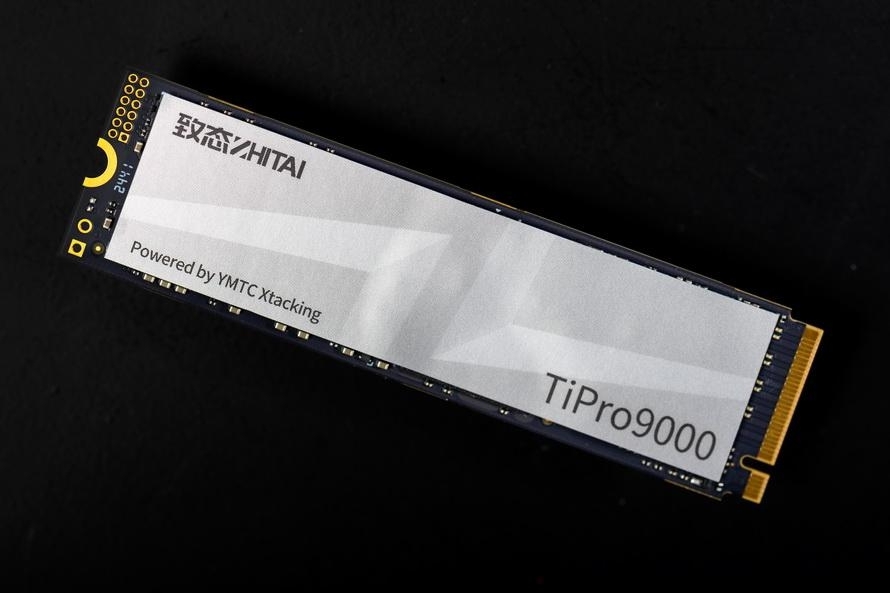
We also selected Corsair's DDR5 memory and Zhitai Tipro9000 PCIe 5.0 SSD, offering maximum read speeds of up to 14 GB/s and write speeds of up to 12.5 GB/s, delivering impressive performance. Considering the TDP of the iGame GeForce RTX 5080 Ultra W OC 16GB exceeds 350W, we chose an ATX 3.1 power supply with an output power of 1000W to ensure robust cooling for the entire platform.
Performance Comparison
Theoretical Performance

3DMark tests primarily compare traditional rasterization performance and ray tracing performance. In these benchmarks, the iGame GeForce RTX 5080 Ultra W OC 16GB graphics card performed approximately 20% better than the RTX 4080. This improvement is attributed to the increased scale and high bandwidth of GDDR7 memory, which is within expectations.
Actual Game Testing
DLSS 4
Currently, performance improvements in traditional rasterized games are minimal, partly due to the inability to indefinitely increase graphics card specifications. AI has emerged as the most significant technological advancement to enhance gamers' experiences, enabling significant results with minimal effort.
NVIDIA is heavily promoting DLSS 4. As NVIDIA's flagship technology, DLSS has evolved continuously over the past six years. In 2025, it adopted the Transformer model, which doubles the AI parameter count and quadruples computational performance compared to traditional CNN models, providing more stable image quality and additional game graphics details. This model is compatible with not only GeForce RTX 50 series graphics cards but also GeForce RTX 40, GeForce RTX 30, and GeForce RTX 20 series graphics cards.
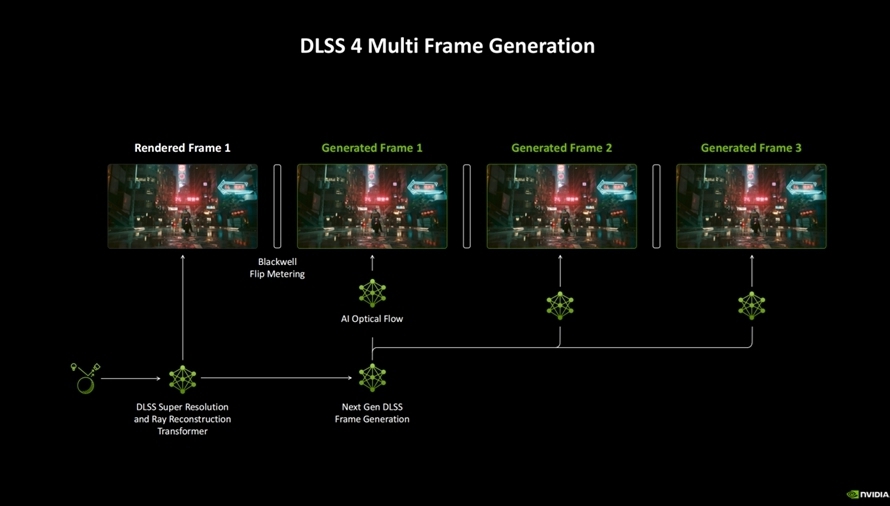
For gamers, the major innovation of DLSS 4 lies in multi-frame generation, meaning that AI can generate more pixels and frames. GeForce RTX 50 series graphics cards utilize AI models for computation, enabling the generation of three frames between each traditionally rendered frame, significantly boosting gaming performance. In other words, the traditional GPU only needs to handle rendering 1/16 of the pixels in the scene, with the rest handled by AI, resulting in a drastic increase in game frame rates.
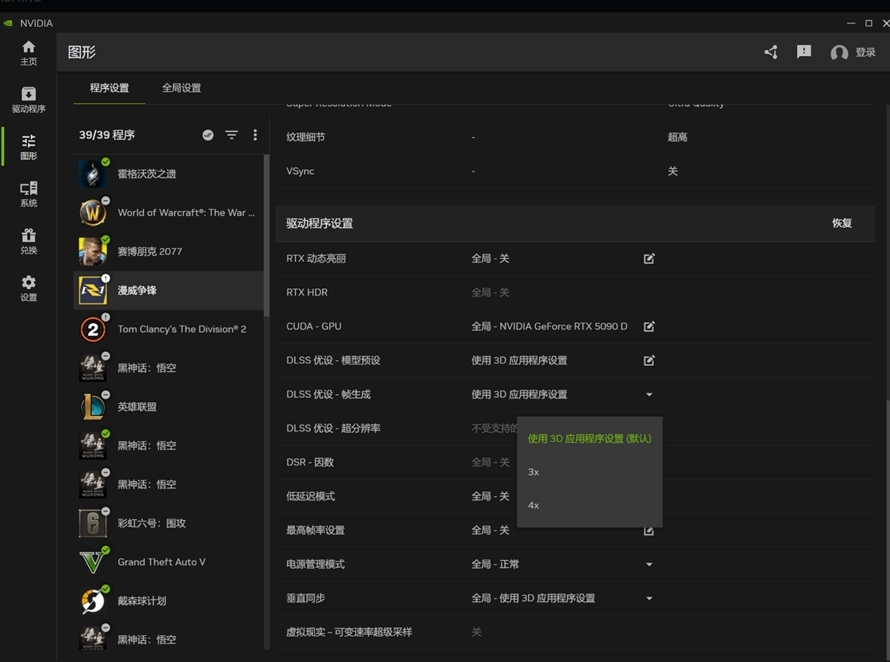

GeForce RTX 5080 Graphics Card Quality Settings

GeForce RTX 4080 Graphics Card Quality Settings
Current tests reveal two methods for implementing DLSS 4. Games like "Cyberpunk 2077," "Hogwarts Legacy," "Alan Wake 2," and "Star Wars: Jedi Survivor" use built-in DLSS 4. On the other hand, games such as "Dragon Age 4" and "Marvel's Midnight Suns" require manual activation of DLSS 4 technology through the NVIDIA APP. Different games have various naming conventions for DLSS 4, but frame generation can be broadly divided into two parts: DLSS 3, equivalent to 2x frame generation, and DLSS 4, encompassing 3x and 4x multi-frame generation.

Notably, "Cyberpunk 2077" offers detailed DLSS settings, allowing adjustments to the Transformer model and CNN model, making it incredibly convenient. It's no surprise that this game is renowned among players as a dedicated graphics card benchmarking tool.

Comparing the CNN model and Transformer model in the same scene, the Transformer model produces a more detailed and smoother image with more natural object details, providing a more stable visual experience.

Thanks to DLSS 4 multi-frame generation technology, the frame rate of the iGame GeForce RTX 5080 Ultra W OC 16GB graphics card has seen a tremendous boost, roughly doubling that of the GeForce RTX 4080 graphics card running in DLSS 3 frame generation mode. For games like "Cyberpunk 2077" that are particularly friendly to DLSS 4, the lead can even reach 2.5 times, showcasing truly impressive performance.
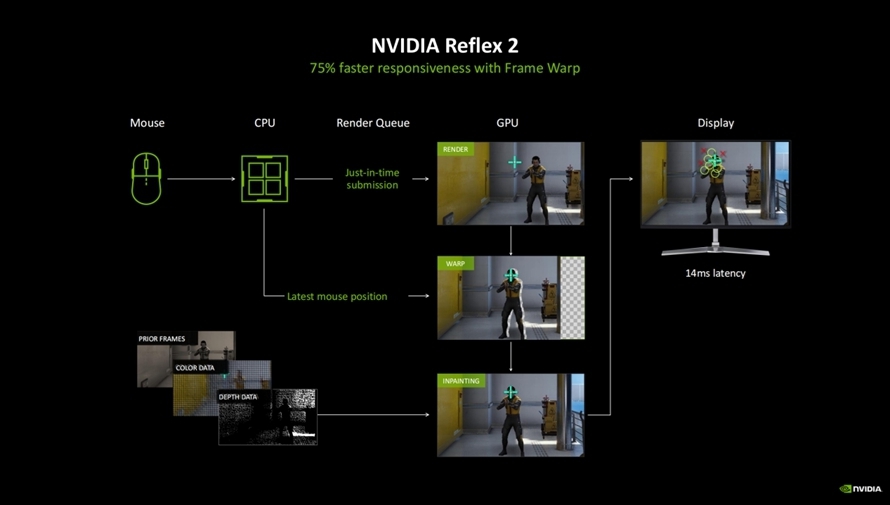
Apart from DLSS 4, to cater to esports players' pursuit of lower input and output latency, NVIDIA has introduced NVIDIA Reflex 2 technology. This technology combines the Reflex low-latency mode with the new Frame Warp technology, reducing frame latency by up to 75%, thereby providing esports players with a smoother gaming experience. NVIDIA states that "Valorant" and "The Finals" will be among the first games to adopt NVIDIA Reflex 2 technology.
Actual Game Testing
Without DLSS 4, the increase in game frame rates is primarily attributed to CUDA improvements, with a performance boost of approximately 18% at 4K resolution and around 12% at 2K resolution.
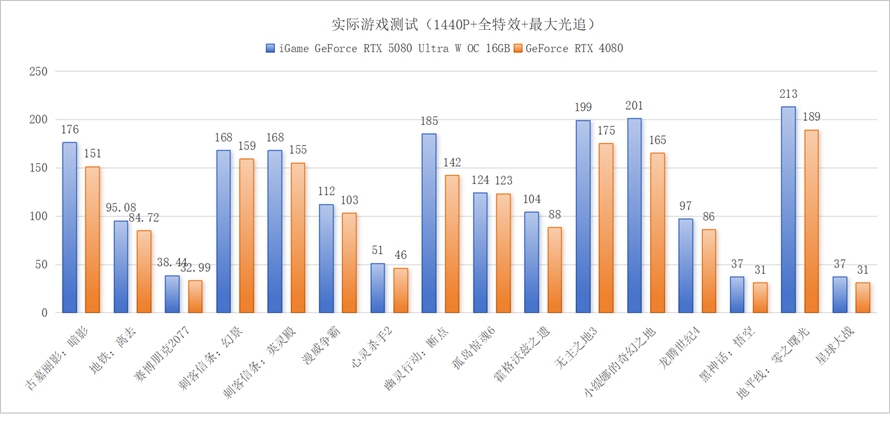
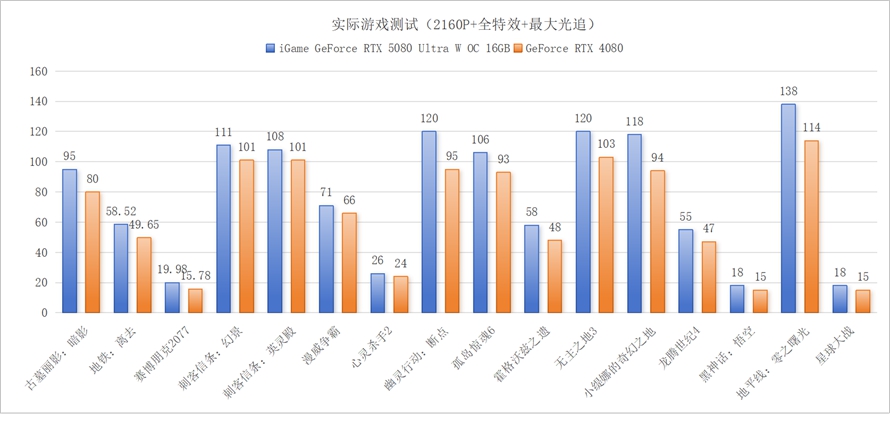
The less significant frame rate improvement at 2K resolution is due to current CPUs and memory hardware potentially bottlenecking graphics cards like the iGame GeForce RTX 5080 Ultra W OC 16GB at this resolution, limiting GPU performance. Therefore, CPU and memory manufacturers should accelerate the launch of products with higher computing power to further enhance overall system performance and prevent GPUs from being held back.
Productivity

We rigorously evaluated the productivity capabilities of the iGame GeForce RTX 5080 Ultra W OC 16GB graphics card. For such tasks, rasterization performance is a key metric often put to the test. In the V-ray benchmark, the iGame GeForce RTX 5080 Ultra W OC 16GB exhibited a commendable 25.5% improvement over the GeForce RTX 4080.
Temperature and Power Consumption
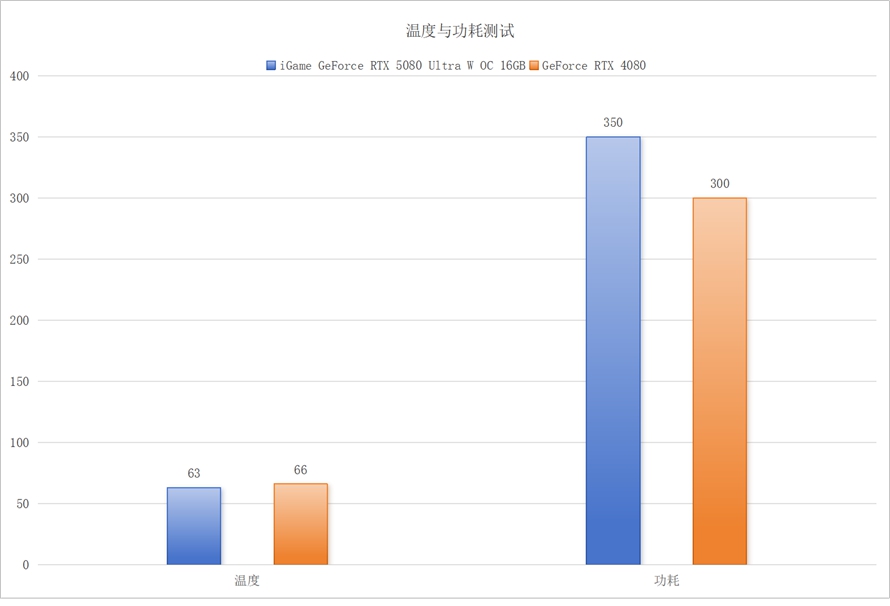
Furthermore, we analyzed the temperature and power consumption of the iGame GeForce RTX 5080 Ultra W OC 16GB in comparison to the GeForce RTX 4080. Given its larger chip size, an increase in power consumption was anticipated, and indeed, it reached 350W. Nonetheless, thanks to iGame's exceptional cooler design, the graphics card maintained a temperature of approximately 63°C under full load, showcasing the efficacy of their newly developed cooling solution. Additionally, iGame's one-click overclocking feature offers a slight boost to GPU performance, allowing gamers to experience the thrill of overclocking without any drawbacks, given the card's already impressive frequency and performance.
Conclusion
Our tests have unveiled that the gaming performance enhancement provided by DLSS 4 surpasses imagination. Even for mid-to-high-end graphics cards like the GeForce RTX 5080, which previously struggled to achieve double-digit frame rates, DLSS 4 enables hundreds of frames, effortlessly dominating all 3A games. It is no surprise that NVIDIA is positioning the new generation of graphics cards to deliver seamless 4K and 240fps 3A gaming experiences. Beyond gaming, DLSS 4 can be utilized in various professional applications, including video rendering, industrial rendering, and video production software, thereby enhancing users' creativity and productivity, ultimately increasing studio revenue and accelerating product output.
As traditional rasterization performance improvements become increasingly incremental, leveraging external forces such as AI to enhance users' actual experience has gained widespread industry consensus. The advent of DLSS 4 opens up even more possibilities for the industry. Moreover, NVIDIA has affirmed that as an AI-based technology, DLSS is continuously being updated and refined. In the future, NVIDIA aims to bring users even more sophisticated versions of DLSS, unlocking even greater potential.
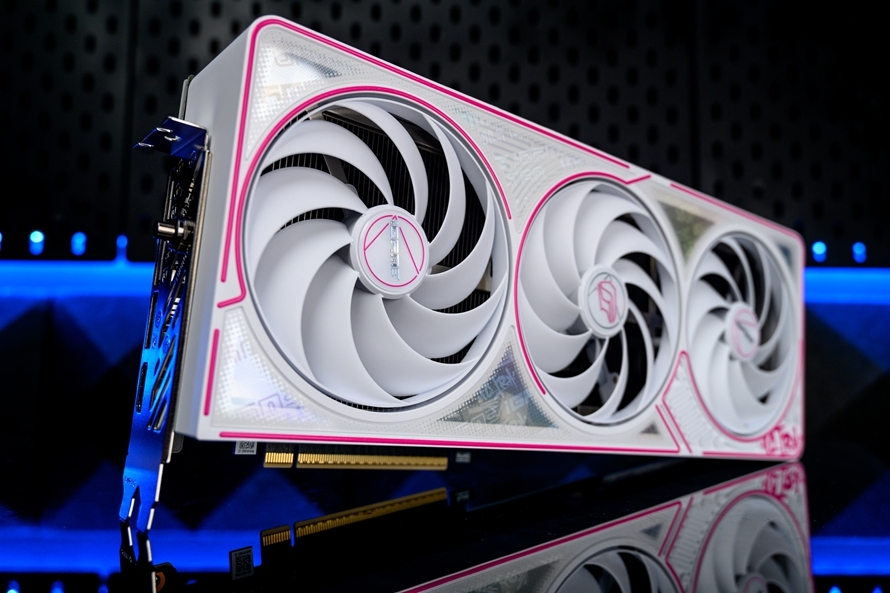
Designed as a next-generation high-end graphics card catering to gaming enthusiasts, the iGame GeForce RTX 5080 Ultra W OC 16GB boasts a youthful and hip-hop-inspired aesthetic that resonates with the tastes of young users. Coupled with suitable hardware configurations, young users can assemble a unique and standout computer. With its exquisite craftsmanship and remarkable cooling performance, the iGame GeForce RTX 5080 Ultra W OC 16GB is poised to become a highly coveted choice among the new generation of gaming enthusiasts.
It is announced that the iGame GeForce RTX 5080 Ultra W OC 16GB graphics card will be available for purchase on January 30th through Colorful's official online store, JD.com, Tmall, Pinduoduo, Douyin, and other e-commerce platforms, as well as authorized retail channels nationwide. In addition to the Ultra series, Colorful has also prepared a range of GeForce RTX 5080 graphics card series, including iGame Vulcan and Neptune, to cater to diverse user preferences. Everyone can select the graphics card that best suits their individual needs.

